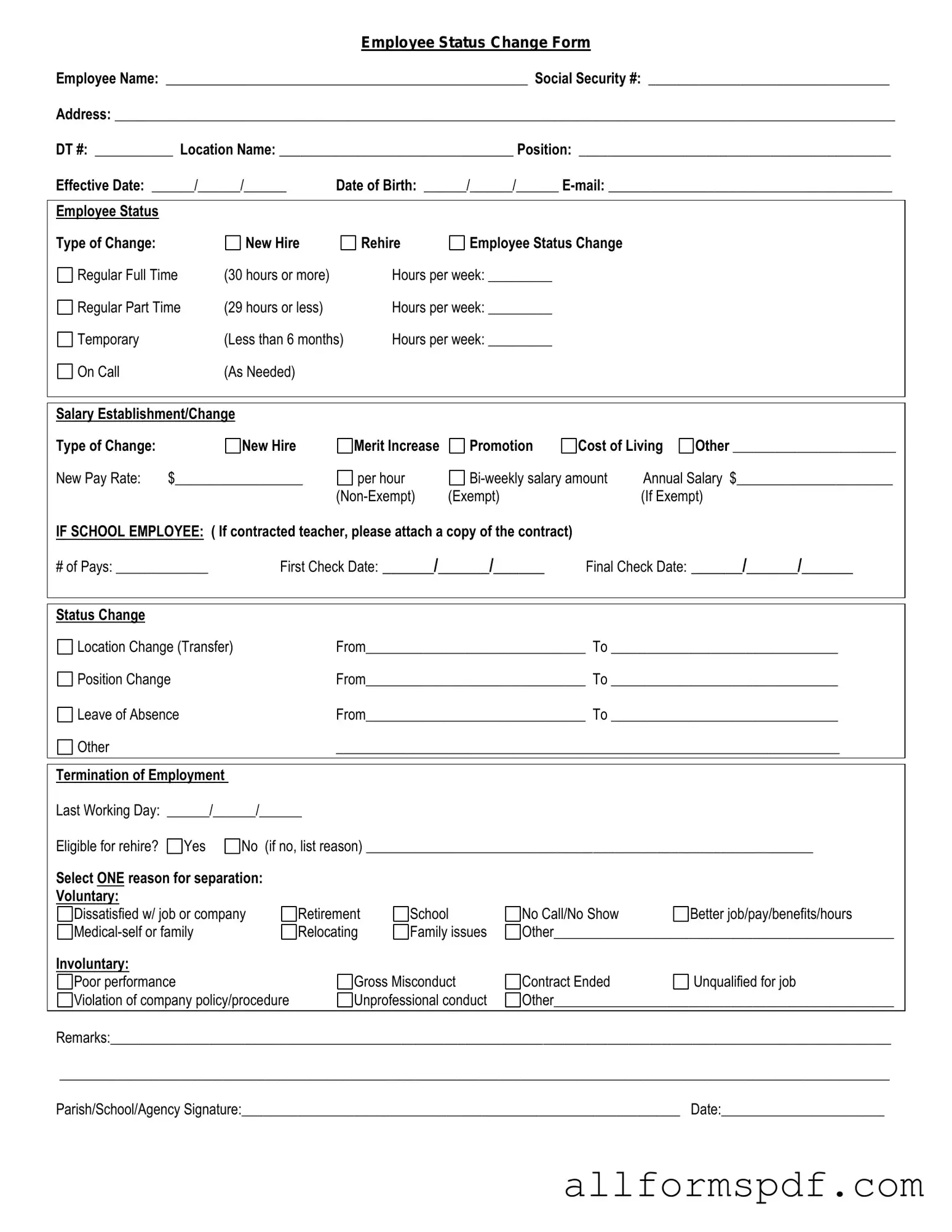Filling out an Employee Status Change form is a critical task that requires attention to detail. Many individuals make common mistakes that can lead to delays or complications in processing. Understanding these mistakes can help ensure a smoother transition for employees.
One frequent error is providing incomplete information. Omitting essential details, such as the employee's identification number or department, can stall the processing of the form. It is crucial to double-check that all required fields are filled out completely.
Another mistake is failing to use the correct format for dates. Different organizations may have specific date formats they prefer, such as MM/DD/YYYY or DD/MM/YYYY. Not adhering to these formats can lead to confusion and misinterpretation of the timeline for the status change.
People often neglect to update their contact information. If an employee’s phone number or email address changes, it should be reflected on the form. This ensures that all communication regarding the status change reaches the right person.
Additionally, some individuals forget to sign the form. A signature is often required to validate the request and confirm that the information provided is accurate. Without a signature, the form may be considered incomplete and returned for correction.
Another common oversight involves not including the effective date of the change. This date is essential for record-keeping and payroll purposes. Without it, there may be confusion about when the changes should take effect.
People sometimes misinterpret the instructions on the form. Each form may have specific guidelines that need to be followed. Reading and understanding these instructions carefully can prevent many common mistakes.
Furthermore, individuals may fail to communicate with their supervisors or HR departments before submitting the form. A lack of communication can lead to misunderstandings about the reasons for the change or the timing, which can complicate the process.
Lastly, not keeping a copy of the submitted form can be a mistake. Retaining a copy allows individuals to reference the information provided in case any issues arise later. This simple step can save time and effort in resolving discrepancies.
